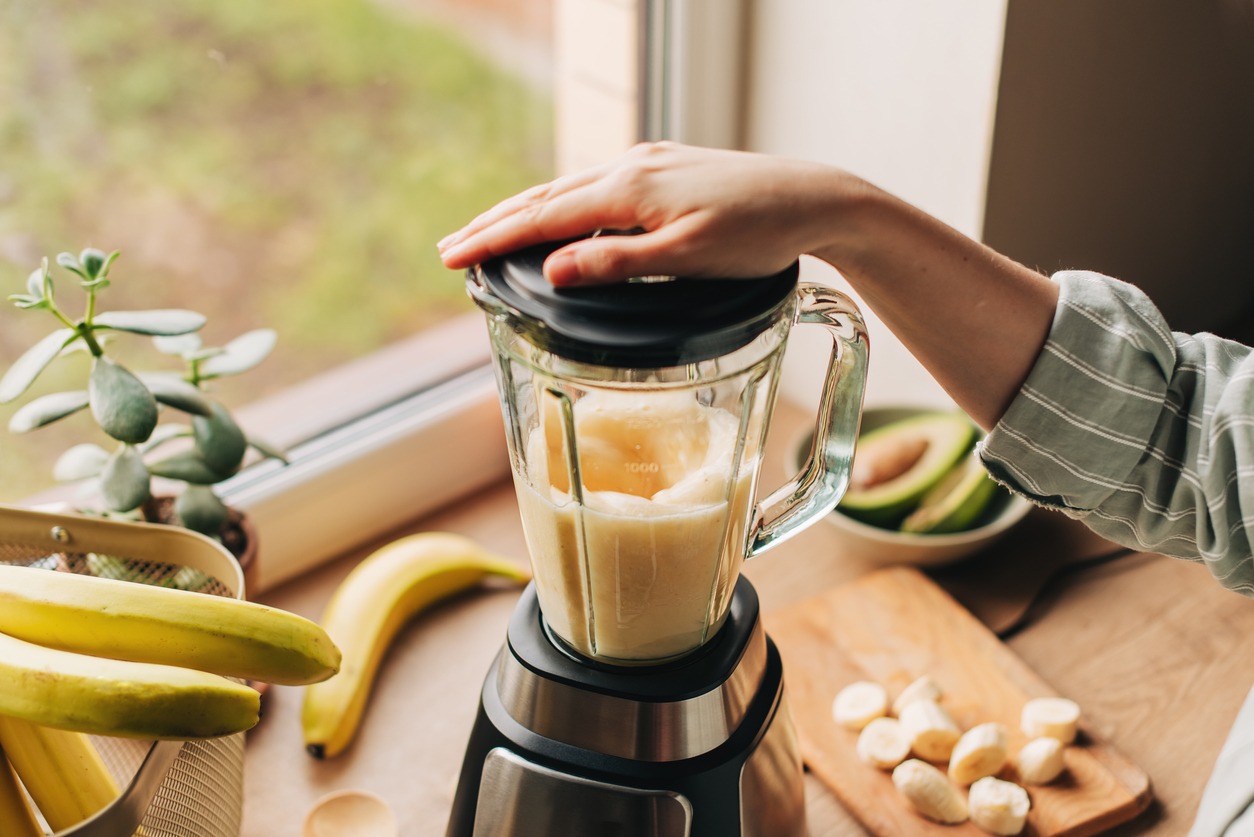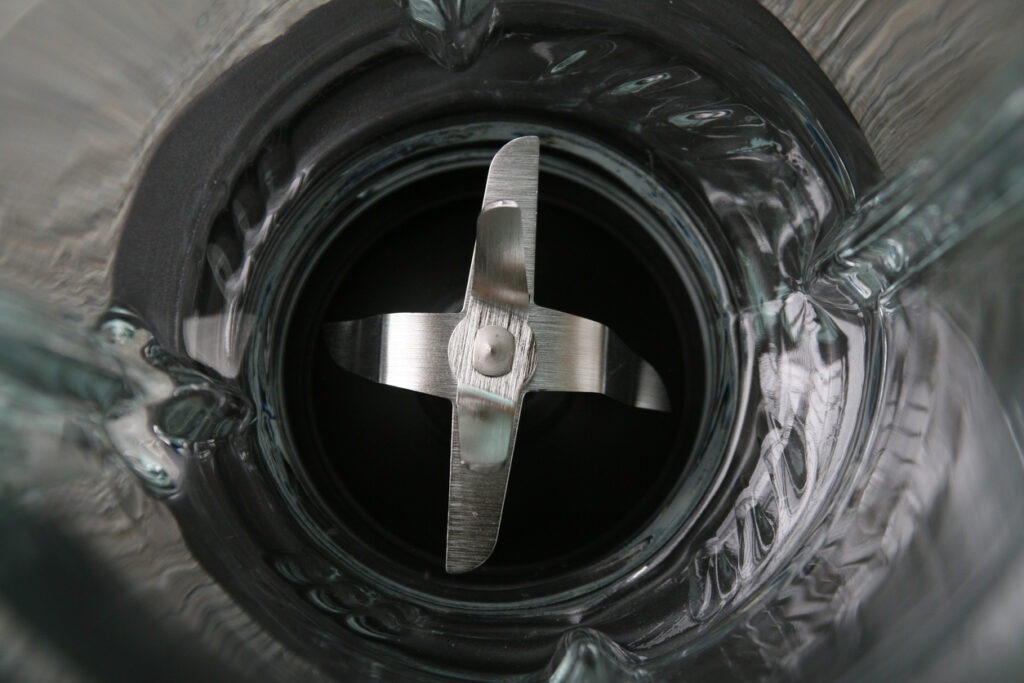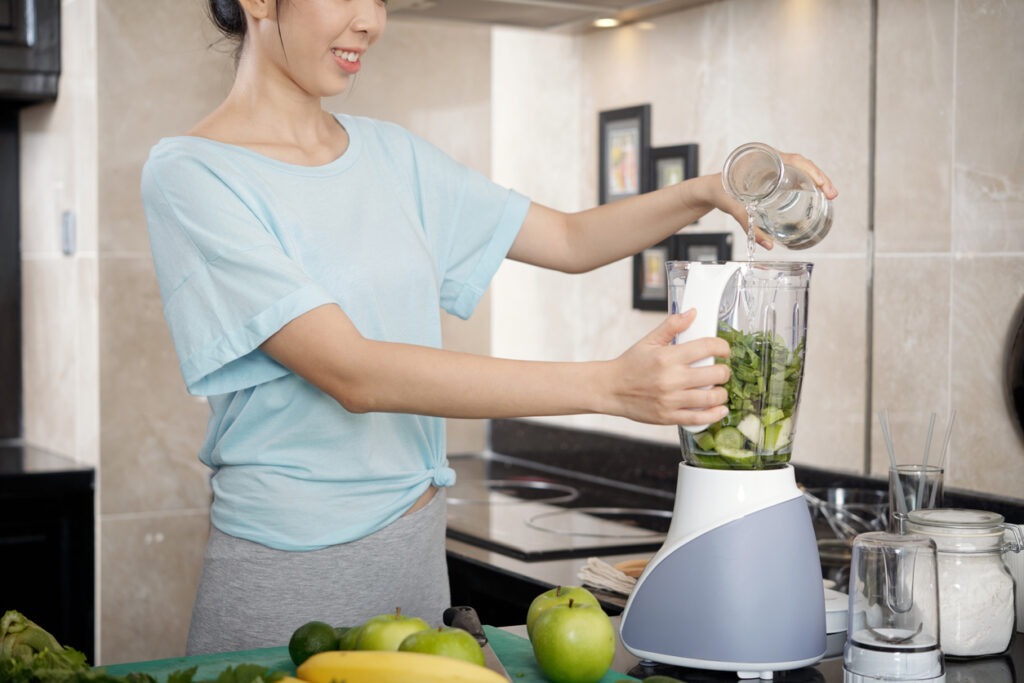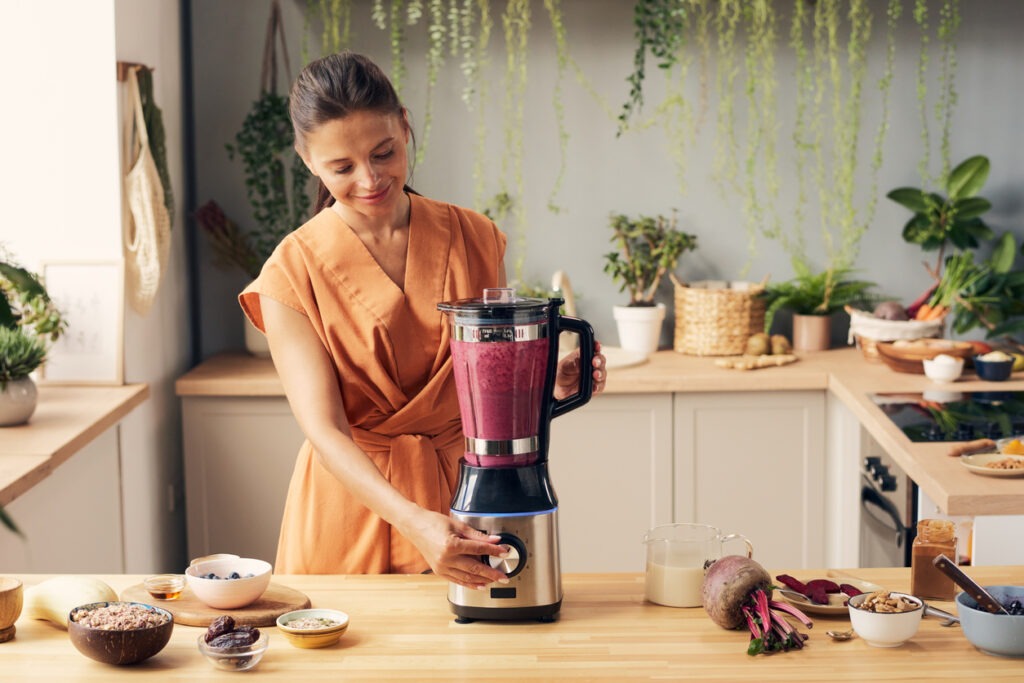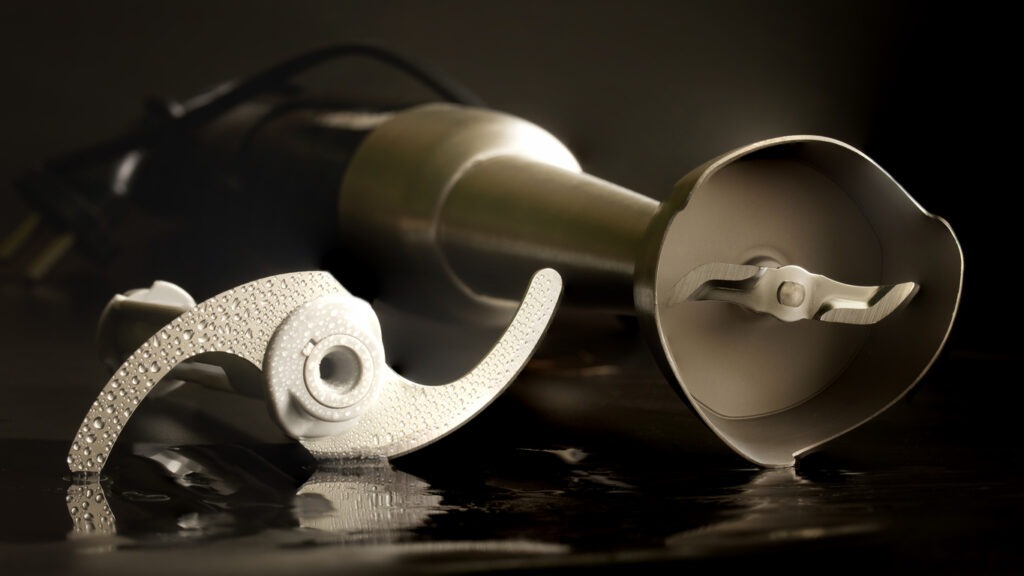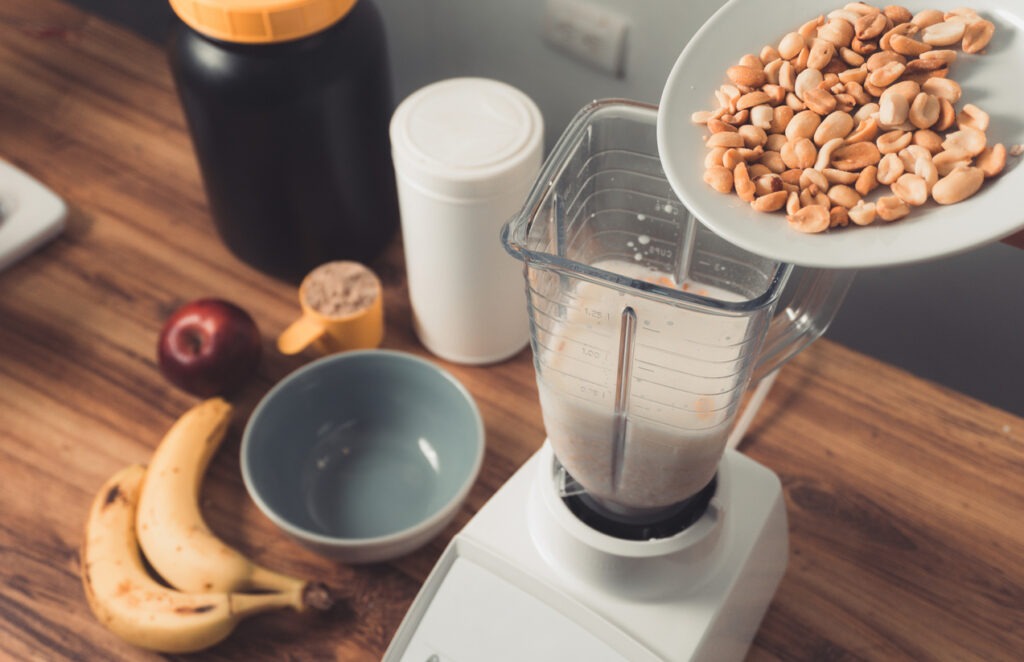The blades of a blender are the sharp, rotating components that are responsible for chopping, pureeing, and liquefying the ingredients. Blender blades are found inside of a blender. These blades are available in a wide variety of shapes and configurations, each of which is designed to work with a specific category of food item or texture. These blades are crafted with a high level of precision to ensure that they deliver the best possible performance. The materials used range from stainless steel to high-quality alloys.
It is impossible to overstate the significance of the blender blades when it comes to the process of producing the ideal blend. The effectiveness of the blending process is directly influenced by the design of these blades and the quality of the blades. Uneven textures, chunks of food that have not been processed, and a blending experience that is less than ideal can be the result of blades that are dull or inefficient. On the other hand, blades that have been carefully crafted and maintained at a high level of sharpness ensure a smooth and consistent blend, releasing your blender’s full potential. To gain an understanding of the function of the blender blades, it is necessary to consider several factors, including the blades’ speed, the blades’ configuration, and the materials used in their construction. The proper arrangement of these components results in superior blending, which is what distinguishes a smoothie that is chunky from one that is smooth and velvety like a masterpiece.
This article will discuss a variety of topics about blender blades, including the various types of blades that are currently on the market, maintenance tips that will ensure the blades last a long time and perform at their best, and how to select the appropriate blades for various blending applications. You are also going to talk about the technological advancements that have been made in blade design and how those advancements have impacted the effectiveness of blending.
Types of Blender Blades
Cross Blades
The X-shaped and four-pointed design of a cross blade is what distinguishes it from other types of blades. These blades have been arranged in such a way as to generate a vortex within the blender. This helps to ensure that the ingredients are drawn toward the center of the blender for more effective blending. The ingredients are chopped and pulverized thanks, in part, to the razor-sharp edges of the cross blades.
When it comes to blending tasks that require chopping through tougher ingredients such as ice, frozen fruits, and fibrous vegetables, cross blades perform exceptionally well. They are typically found in blenders that have been designed specifically for making smoothies, shakes, and other types of frozen beverages.
Advantages:
- Capable of efficiently reducing the size of tough and frozen ingredients.
- Produces a powerful whirlpool for complete mixing of the ingredients.
Disadvantages:
- Possible difficulty with more delicate tasks, with the risk of over-pulverizing ingredients that are more delicate.
- There may be some difficulty in cleaning the intricate design.
Flat Blades
As their name suggests, flat blades have a profile that is both flat and broad. They frequently have serrations or a hybrid design consisting of both pointed and rounded edges. Because these blades function by slicing through the ingredients, you can use them for a wide variety of blending tasks.
Blending tasks such as pureeing fruits and vegetables, making soups, and making sauces that are smooth and silky can all be accomplished with the help of flat blades because of their adaptability and versatility. They are typically found in blenders that value versatility over specialized functions and have a wide range of applications.
Advantages:
- Flexible and adaptable to a wide range of blending applications.
- Because of their uncomplicated construction, they are much simpler to clean.
Disadvantages:
- In comparison to cross blades, this type of knife might not perform as well when dealing with tougher or frozen ingredients.
- Certain activities may take longer because of the slicing action.
Multi-Prolonged Blades
Multiple points of incisiveness are arranged in a circular or semicircular pattern across the surface of a multi-pronged blade. These blades were developed to produce a dynamic blending action, which ensures that the ingredients are processed from a variety of angles throughout the entire mixing process.
Making smoothies, pureeing soft fruits, and blending liquids are just some of the many blending tasks that can be accomplished more efficiently with blades that have multiple prongs. They are typically found in blenders that prioritize versatility as well as overall performance when it comes to blending.
Advantages:
- Offers a dynamic blending action that ensures consistent results.
- Adaptable to a wide range of components and surface textures due to its versatility.
Disadvantages:
- It is possible that these blades will not perform as well in specialized tasks as blades with more specific designs.
- Because there are multiple prongs, cleaning can be a more difficult process.
Users can find it helpful to choose the right blender for their particular blending needs and preferences if they have a thorough understanding of the characteristics, and ideal applications, as well as the pros and cons of each type of blender blade.
Blade Materials
Stainless Steel Blades
Characteristics
Blades made of stainless steel are renowned for their strength as well as their durability and resistance to corrosion. They are typically fabricated from a high-quality stainless steel alloy, which might contain chromium and nickel as some of its constituent elements. The blades are crafted to withstand rust and keep their edge for an extended period through careful engineering.
Benefits for Blending
- Durability: Blades made of stainless steel are suitable for frequent use because they have a high level of durability and can withstand the rigors of blending.
- Corrosion Resistance: Because stainless steel is resistant to corrosion, its blades will not be harmed by the acids that are found in many fruits and vegetables. As a result, the blades will continue to function reliably for a much longer period.
- Sharpness: Blades made of stainless steel can keep their edges sharp for longer, which allows for more effective blending and more reliable results.
Titanium Blades
Characteristics
Titanium blades have a layer of titanium, which is a metal that is both strong and lightweight, deposited on top of a base material, which is typically stainless steel. This coating makes the blades harder and more durable than they would be otherwise.
Advantages
- Hardness: Titanium coatings make blades extraordinarily hard, thereby increasing their durability and resistance to wear and tear.
- Lightweight: The utilization of titanium enables the blades to keep their lightweight nature while simultaneously contributing to their overall strength.
- Resistance to Corrosion: Titanium’s resistance to corrosion is one of the reasons why the blades should last for a long time.
Limitations
- Cost: Titanium knives can have a higher price tag than those made of other materials.
- Coating Wear: The titanium coating has a chance of wearing off over time, which could result in the blades having a reduced level of efficiency.
Composite Blades
Composition
Composite blades are made up of several different materials, the majority of which are not metals but rather a combination of metals and other materials. The objective is to build blades that have improved performance characteristics by capitalizing on the benefits offered by a variety of different materials.
Suitability for Different Blending Tasks
- Versatility: Blades made of composite materials can be engineered to provide an optimal balance of strength, sharpness, and flexibility, making them suitable for a wide range of blending applications.
- Tailored Performance: The specific composition of composite blades can be customized to cater to specific blending needs, such as handling tough ingredients or providing precision for delicate tasks. This allows composite blades to be used for a wide variety of blending applications.
- Potential for Innovation: To develop blades that push the limits of what is possible with blending technology, manufacturers can try their hand at working with a variety of materials.
When it comes to choosing a blender, customers can make more educated decisions if they have a solid understanding of the qualities and advantages offered by various blade materials. The performance of the blender, its longevity, and its adaptability to a wide variety of blending tasks and ingredients can all be affected by the material from which the blades are made.
Blade Design and Configuration
Blade Arrangement
Single-Layer Blades
Blades with a single layer have just one row of serrations along their length. Because of the straightforward nature of this design, both the production and upkeep of these items are relatively straightforward. Making smoothies and shakes, as well as puréeing soft ingredients, are examples of the types of basic blending tasks that are suitable for single-layer blades.
Advantages and Disadvantages
The simplicity and low maintenance requirements are two advantages. The con is it may have difficulty with more complex blending tasks and ingredients that are more difficult to process.
Multi-Layer Blades
Blades with multiple layers and rows of cutting edges, typically arranged in a spiral or stacked pattern, are referred to as multi-layer blades. The provision of multiple cutting actions is included in this design to make the blending process more effective.
Blades with multiple layers are superior at processing a wide range of ingredients, including challenging components such as ice and fibrous vegetables. They are frequently found in blenders that have a high level of performance.
Advantages and Disadvantages
The versatility and effectiveness of the blending process are both improved as a result. The increased complexity may necessitate a more in-depth cleaning process, which is one of the drawbacks.
Blade Angles
Importance of Blade Angles
When blending, the angle of the blades is one of the most important factors in determining how the ingredients are drawn closer to the blades. The angle affects the formation of the vortex as well as the force that is applied to the various components of the mixture.
Impact on Blending Performance
- Sharper Angles: Blades with sharper angles can produce a more aggressive blending action, which is suitable for breaking down ingredients that are difficult to mince.
- Gentler Angles: When performing tasks that require a more delicate approach, such as pureeing soft fruits or creating smooth sauces, blades with gentler angles are effective because they allow for more control.
Blade Safety Features
Safety Caps
- Description: Safety caps are protective covers or enclosures that are designed to be placed around the blender blades to prevent accidental contact while the blender is being used as well as when it is not being used.
- Purpose: The use of safety caps improves user safety by reducing the likelihood of injuries occurring, particularly when the blender is being cleaned or when it is being handled.
Auto-Stop Mechanism
- Description: Auto-stop mechanisms are safety features that automatically halt the operation of the blender when certain conditions are met. These conditions include the removal of the blender jar or excessive resistance in the blades. Auto-stop mechanisms are also known as safety interlocks.
- Purpose: These mechanisms prevent potential accidents, protect the motor from damage, and ensure the safety of the user by stopping the blades in situations where continued operation could be unsafe. Additionally, these mechanisms protect the motor from damage.
Users have more power to select a blender that satisfies their blending preferences and meets their safety requirements when they have a better understanding of the blade arrangement, angles, and safety features. The right blade design can have a significant impact on a blender’s overall performance as well as its level of safety, regardless of whether you’re looking for ease of use for routine blending or advanced features for difficult tasks.
Factors Affecting Blade Performance
Blade Arrangement
Description
The performance of a blender’s blades is directly impacted by the strength of the motor that drives the blender. The energy that is necessary to rotate the blades at high speeds is generated by the motor.
Impact on Blade Performance
- Higher Power: A more powerful motor can drive the blades at higher speeds, which improves the ability of the blades to handle tough ingredients and produce smoother blends.
- Lower Power: Blenders with less motor power may have difficulty completing challenging tasks and may not provide the same level of consistency.
Speed Settings
Description
The blade rotation speed of a blender can typically be adjusted by the user according to the particular blending task at hand thanks to the device’s frequently included multiple speed settings or variable speed control.
Impact on Blade Performance
- Variable Speeds: There are a variety of speeds available to accommodate the various components and textures. When breaking down tougher items, higher speeds are more effective than lower speeds because higher speeds blend for longer periods.
- Pulse Function: Some blenders have a pulse function that allows users to have better control over the blending process by providing short bursts of high-speed blending. This function is typically found on high-end blenders.
Container Shape and Sizes
Description:
The shape and dimensions of the blender container affect how the blades interact with the ingredients while the blender is operating. There is a wide variety of container shapes, from common pitchers to more specialized designs.
Impact on Blade Performance
- Vortex Formation: Certain container shapes make it easier to generate a powerful vortex, which draws ingredients closer to the blades of a blender so that they can be blended more thoroughly.
- Optimal Fill Level: The blender may function at its best within a certain range of fill levels, which will ensure that the ingredients are correctly moved around the blades.
Ingredient Consistency
Description
The blades will interact with the ingredients being blended in a certain way depending on the consistency and texture of the ingredients. Ingredients can range from pliable fruits to solid ice cubes, depending on the recipe.
Impact on Blade Performance
- Uniformity: A more even blending is possible when the ingredients have a consistent texture, which also prevents the blades from becoming clogged and producing inconsistent results.
- Toughness: If you want to make sure that your ingredients are completely processed, you might need to use more powerful blades and a faster speed.
To get the best results possible from a blender, it is essential to have a solid understanding of these factors and how they affect the performance of the blades. Users can customize their blending strategy by taking into account the dynamic relationship between the motor power, speed settings, container design, and the consistency of the ingredients. Because of this information, individuals are given the ability to select a blender based on informed decisions and to utilize it effectively for a variety of blending tasks.
Maintenance and Care Tips
Cleaning and Sanitizing Blades
- Regular Cleaning: After each use, the blender should be taken apart and the blades should be given a thorough cleaning. To remove any residue or food particles, clean the surface with warm, soapy water and a brush.
- Avoiding Submersion: When you are cleaning the blender, you should avoid completely submerging the base, especially if it contains a motor. Instead, wipe it down with a cloth that has been dampened.
- Sanitizing: When you are cleaning the blender, you should avoid completely submerging the base, especially if it contains the motor. Instead, wipe it down with a cloth that has been dampened.
Regular Sharpening
- Check Sharpness: Check the blades regularly to see if they have become dull. It is time to sharpen the blades if they appear to be dull or if they have difficulty cutting through the ingredients.
- Sharpening Techniques: Some blenders come equipped with blade sharpeners, while others recommend a particular tool to be used for the purpose. Always make sure to sharpen your tools according to the instructions provided by the manufacturer.
Avoiding Overloading
- Follow Capacity Guidelines: Maintain the recommended capacity limits for the blender at all times. If you overload the blender, it will put strain on the motor and the blades, which will result in decreased performance and possibly even damage.
- Pre-cut Ingredients: To improve the effectiveness of the blending process and lessen the strain placed on the blades, consider pre-cutting any ingredients that are particularly large or tough into smaller pieces.
- Pulse Technique: Make use of the pulse function rather than the continuous blending mode whenever you are working with difficult ingredients. Because of this, the blades can deal with the load in shorter bursts, which prevents them from overheating.
It is essential to care for and maintain blender blades to ensure that they last a long time and perform to their full potential. Users can enjoy consistent blending results and extend the lifespan of their blenders by incorporating these tips into a regular maintenance routine so that they can maintain their blenders. Regular cleaning, periodic sharpening of the blades, and usage practices that are mindful all contribute to a blending experience that is both smooth and effective.
Choosing the Right Blades for Specific Blending Tasks
Smoothies and Shakes
Recommended Blade Type
Smoothies and shakes work best when blended with a blade that has multiple prongs or a cross design.
Reasoning
- Versatility: A dynamic blending action is provided by blades with multiple prongs, which ensures a smooth consistency is achieved for liquid-based mixtures.
- Efficient Crushing: Cross blades are superior when it comes to pulverizing soft and frozen fruits, which are common components of smoothies.
Pureeing Soups
Recommended Blade Type
Blades that are flat and have a serrated edge or blades that have multiple layers.
Reasoning
- Slicing Action: It is possible to slice through cooked vegetables with ease using flat blades that have a serrated edge. This will ensure a smooth puree.
- Versatility: The use of blades with multiple layers enables a comprehensive blending action, which is ideal for producing soups with a uniform consistency.
Crushing Ice
Recommended Blade Type
Sharpened blades arranged in a cross pattern.
Reasoning
- Powerful Crushing Action: A potent vortex is generated by the four-pointed design of the cross blades, which is ideal for crushing and blending ice in a time-efficient manner.
- Durability: Cross blades are designed to withstand the pressure that is applied to them by ice cubes thanks to their sturdy construction.
Grinding Nuts and Seeds
Recommended Blade Type
Flat blades or blades designed for dry grinding.
Reasoning
- Precision Grinding: When grinding nuts and seeds, flat blades, particularly those with a combination of sharp and blunt edges, can provide a more accurate and efficient action.
- Dry Grinding Capability: The processing of tough, dry ingredients like nuts and seeds is made easier with blades that are designed specifically for dry grinding.
It is essential to take into consideration not only the type of blades but also the motor power, the different speed settings, and the container design when selecting a blender for particular purposes. More control can be exerted over the blending process by using blenders that feature variable speed controls and pulse functions. In addition, selecting a blender that has a container that is proportionately sized to the job at hand can help contribute to the achievement of optimal results. Users can ensure efficient and effective performance for a wide variety of culinary endeavors by matching the blade type with the intended blending task. This aligns the blade type with the intended task.
Conclusion
Consider the following tips to improve your blending experience as you strive for perfect blends. To begin, select a blender with the appropriate blade type for the task at hand, such as the versatile multi-pronged blades for smoothies or the tough cross blades for crushing ice. Clean your blender thoroughly after each use, sanitize it regularly, and sharpen the blades as needed. To avoid overloading, keep capacity limits in mind and use the pulse function strategically for difficult ingredients. Finally, consider motor power, speed settings, and container design in addition to blade selection. Understanding how these elements interact will help you master the art of blending, opening up a world of culinary possibilities and ensuring consistently smooth, delicious results every time.

